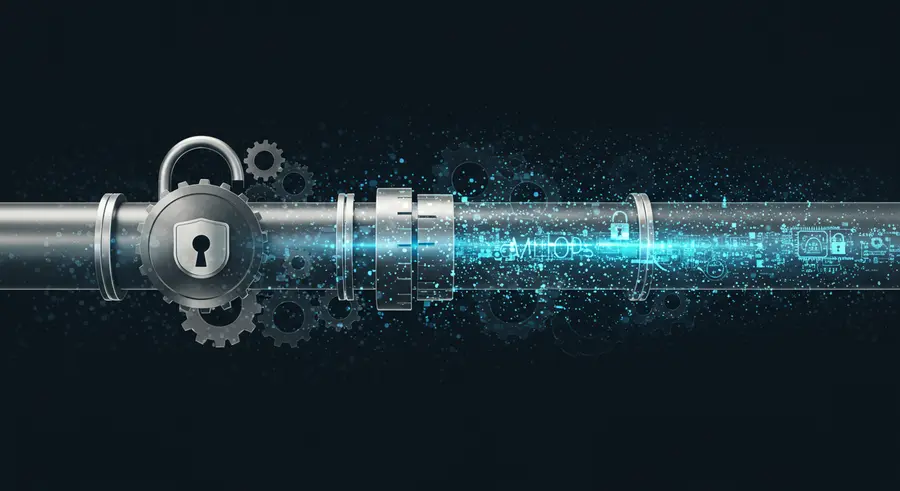Appearance

Welcome, fellow tech enthusiasts and data scientists! 👋 Today, we're diving deep into the critical aspects of MLOps: Advanced Security & Deployment Strategies. In an era where Machine Learning models are at the heart of business operations, ensuring their security and deploying them efficiently is paramount. This article builds upon the foundational concepts of MLOps, particularly the Introduction to MLOps Lifecycle, and expands on how to fortify your ML pipelines against modern threats while optimizing their journey to production.
The Imperative of MLOps Security 🛡️
As ML models become more integrated into critical systems, they also become attractive targets for attackers. A compromised model can lead to erroneous predictions, data breaches, or even system failures. Therefore, integrating security throughout the MLOps lifecycle is not just a best practice, but a necessity.
Here are some key areas to focus on:
Data Security: Data is the lifeblood of any ML model. Protecting your training and inference data from unauthorized access, tampering, and poisoning is crucial. This includes:
- Encryption: Encrypt data at rest and in transit.
- Access Control: Implement strict role-based access control (RBAC) to your data storage and processing environments.
- Data Validation: Establish robust data validation checks to prevent malicious data injection.
- Anonymization/Pseudonymization: Where possible, anonymize or pseudonymize sensitive data.
Model Security: The ML model itself is a valuable asset that needs protection.
- Model Versioning and Lineage: Maintain clear version control for models, including their training data, code, and configurations. This allows for reproducibility and quick rollbacks in case of issues.
- Adversarial Robustness: Train models to be resilient against adversarial attacks, where subtle perturbations to input data can lead to incorrect outputs.
- Vulnerability Scanning: Regularly scan your model dependencies and containers for known vulnerabilities.
Pipeline Security: The MLOps pipeline, from data ingestion to model deployment, is a complex chain of processes that must be secured.
- Secure CI/CD Practices: Apply DevOps security principles to your MLOps CI/CD pipelines, including static code analysis, dynamic application security testing (DAST), and dependency scanning.
- Secrets Management: Securely manage API keys, database credentials, and other sensitive information using dedicated secrets management tools.
- Least Privilege: Ensure that each component in the pipeline only has the minimum necessary permissions.
Runtime Security: Once deployed, models are still exposed to threats.
- Real-time Monitoring: Implement comprehensive monitoring for model performance, data drift, concept drift, and potential security anomalies.
- Threat Detection: Utilize security information and event management (SIEM) systems to detect and respond to suspicious activities.
- Immutable Infrastructure: Deploy models on immutable infrastructure to prevent unauthorized changes after deployment.
Advanced Deployment Strategies for MLOps 🚀
Beyond basic deployment, advanced strategies ensure high availability, resilience, and efficient resource utilization.
Canary Deployments: Gradually roll out new model versions to a small subset of users before a full rollout. This allows for real-world testing and quick rollback if issues arise, minimizing impact.
Blue/Green Deployments: Maintain two identical production environments (Blue and Green). One is active (Blue) and serves all traffic, while the new version is deployed to the inactive environment (Green). Once validated, traffic is switched to Green, and Blue becomes the inactive environment for future deployments or rollback. This offers zero downtime deployments and easy rollbacks.
A/B Testing: Deploy multiple model versions simultaneously and route different segments of users to each version to compare their performance based on business metrics. This is crucial for optimizing model effectiveness and validating improvements.
Multi-Cloud/Hybrid Deployments: Deploying models across multiple cloud providers or a hybrid of on-premise and cloud infrastructure enhances resilience and avoids vendor lock-in. This requires robust orchestration and unified monitoring.
Edge AI Deployments: For low-latency and privacy-sensitive applications, deploying models directly to edge devices (e.g., IoT devices, mobile phones) can be highly beneficial. This introduces challenges in model optimization for resource-constrained environments and secure updates.
Serverless Deployments: Leveraging serverless platforms for model serving can significantly reduce operational overhead and scale automatically with demand. This often involves packaging models as functions and integrating them with API gateways.
Integrating Security into Advanced Deployments 🤝
The combination of advanced deployment strategies with robust security measures creates a resilient and reliable MLOps pipeline.
- Secure Canary and Blue/Green: Before shifting traffic, perform comprehensive security scans and penetration testing on the new deployments.
- A/B Testing with Security Metrics: Include security-related metrics (e.g., number of failed authentication attempts, anomaly scores) in your A/B testing to ensure new versions don't introduce new vulnerabilities.
- Secure Edge AI: Implement secure boot, hardware-level security, and encrypted communication for edge devices. Over-the-air (OTA) updates must also be secure and authenticated.
Conclusion ✨
The journey from model development to production is complex, and MLOps provides the framework to navigate it effectively. By prioritizing advanced security measures and implementing intelligent deployment strategies, we can build robust, reliable, and secure machine learning systems that drive real-world value. As the MLOps landscape continues to evolve, staying informed about the latest best practices and tools will be key to success. Keep experimenting, keep learning, and keep building secure and scalable AI solutions!